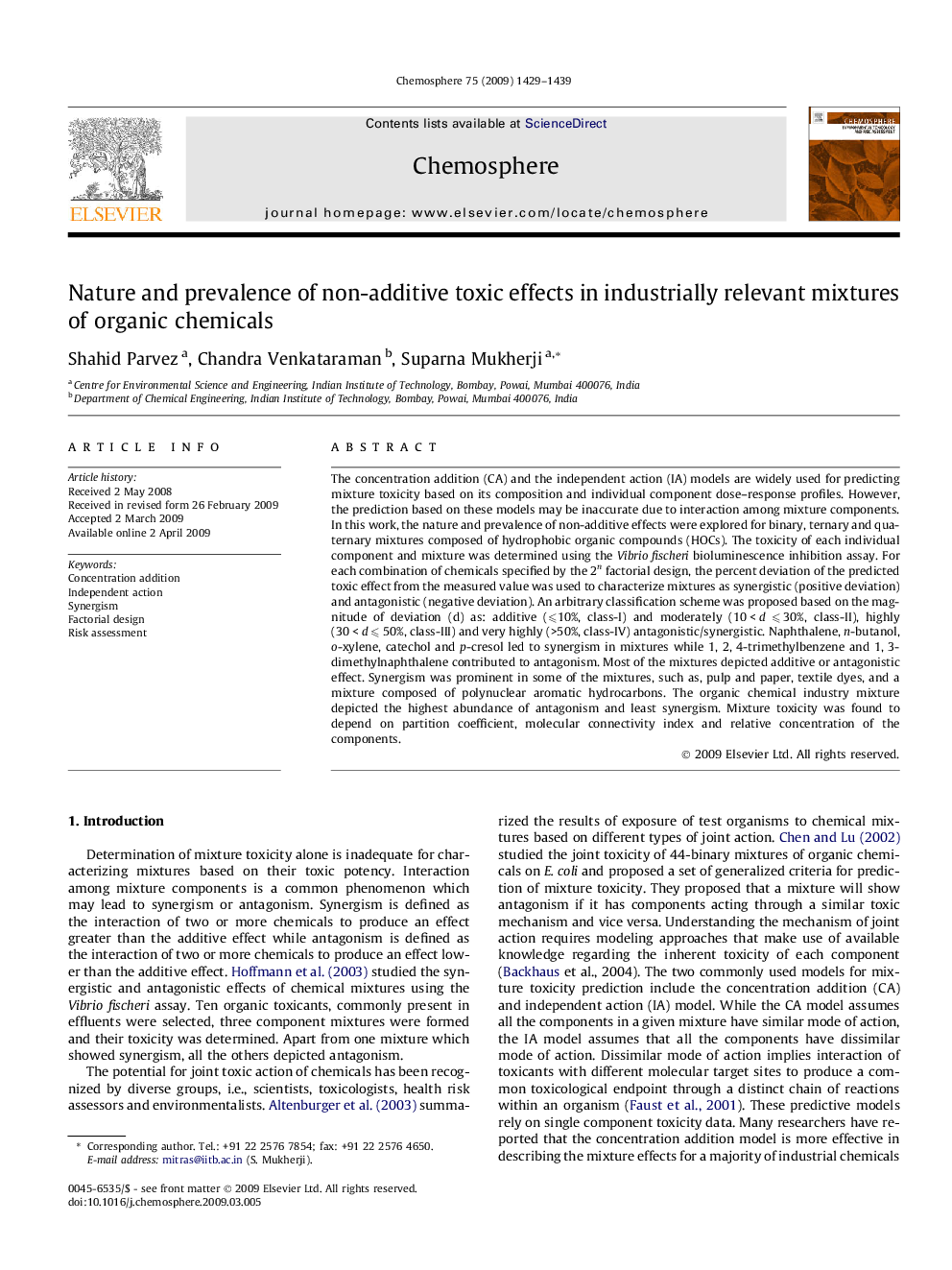| کد مقاله | کد نشریه | سال انتشار | مقاله انگلیسی | نسخه تمام متن |
|---|---|---|---|---|
| 4412943 | 1307658 | 2009 | 11 صفحه PDF | دانلود رایگان |

The concentration addition (CA) and the independent action (IA) models are widely used for predicting mixture toxicity based on its composition and individual component dose–response profiles. However, the prediction based on these models may be inaccurate due to interaction among mixture components. In this work, the nature and prevalence of non-additive effects were explored for binary, ternary and quaternary mixtures composed of hydrophobic organic compounds (HOCs). The toxicity of each individual component and mixture was determined using the Vibrio fischeri bioluminescence inhibition assay. For each combination of chemicals specified by the 2n factorial design, the percent deviation of the predicted toxic effect from the measured value was used to characterize mixtures as synergistic (positive deviation) and antagonistic (negative deviation). An arbitrary classification scheme was proposed based on the magnitude of deviation (d) as: additive (⩽10%, class-I) and moderately (10 < d ⩽ 30%, class-II), highly (30 < d ⩽ 50%, class-III) and very highly (>50%, class-IV) antagonistic/synergistic. Naphthalene, n-butanol, o-xylene, catechol and p-cresol led to synergism in mixtures while 1, 2, 4-trimethylbenzene and 1, 3-dimethylnaphthalene contributed to antagonism. Most of the mixtures depicted additive or antagonistic effect. Synergism was prominent in some of the mixtures, such as, pulp and paper, textile dyes, and a mixture composed of polynuclear aromatic hydrocarbons. The organic chemical industry mixture depicted the highest abundance of antagonism and least synergism. Mixture toxicity was found to depend on partition coefficient, molecular connectivity index and relative concentration of the components.
Journal: Chemosphere - Volume 75, Issue 11, June 2009, Pages 1429–1439